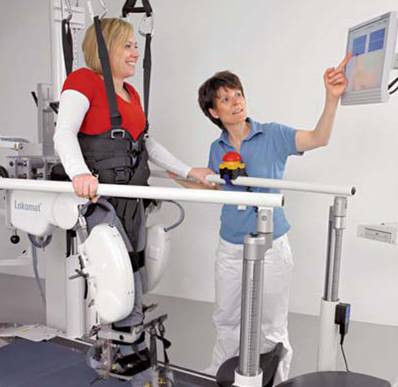About half of patients who experience a traumatic spinal cord injury (SCI) have still motor and/or sensory function below the level of the lesion. A large proportion of these patients become ambulatory within the first six months after the SCI. In order to optimally train the walking function patients are partially unloaded from their body weight while they walk on a moving treadmill. In severe cases therapists have to assist the leg movements which is an exhaustive work limiting training time. In the last few years robotic devices have been developed which enable longer training time. Studies evaluating the training of patients with hemiparesis showed that longer training time is associated with a better outcome. The present study aims at evaluating the effect of training time within the robotic device on the recovery of ambulatory function. Subject with an acute incomplete SCI will be included. The intervention consist of a walking training which lasts at least 50min, the training of the control group last at maximum 25min. Both groups will undergo 3-5 trainings per week. Group assignment will be performed at random. The study lasts for 8 weeks. The primary outcome will be the self selected walking speed which will be assessed bi-weekly during the training period and 4 months later.

Copyright Hocoma



